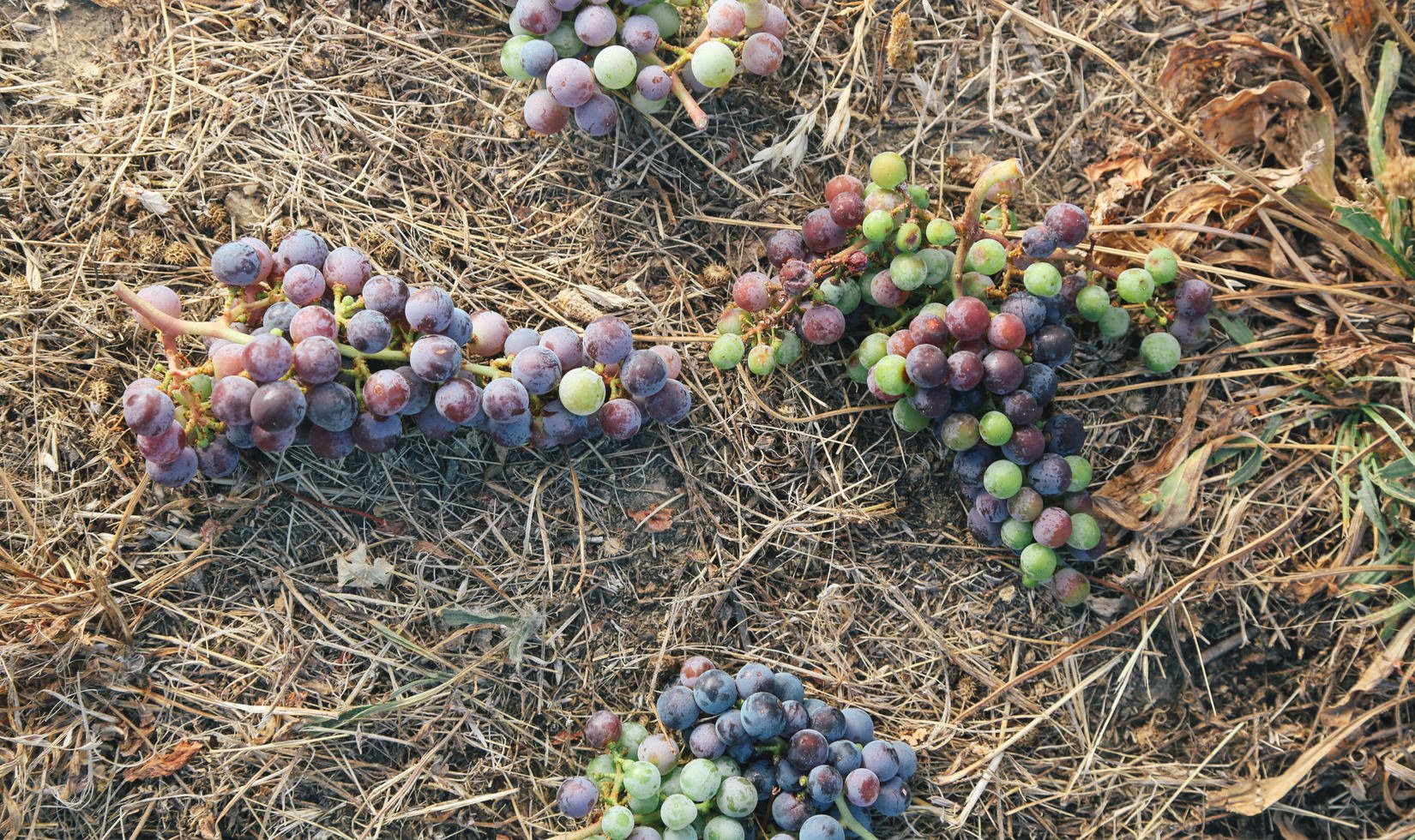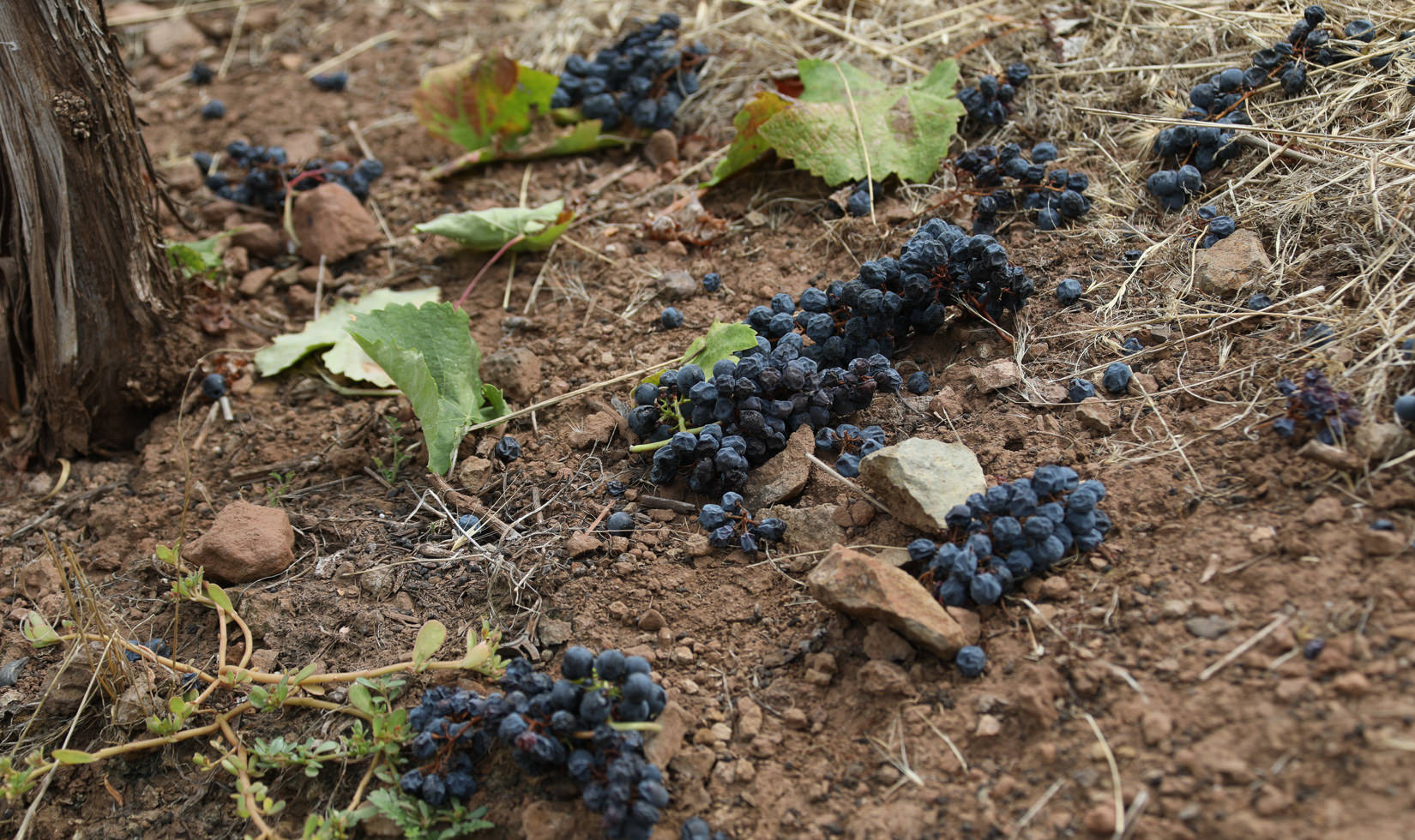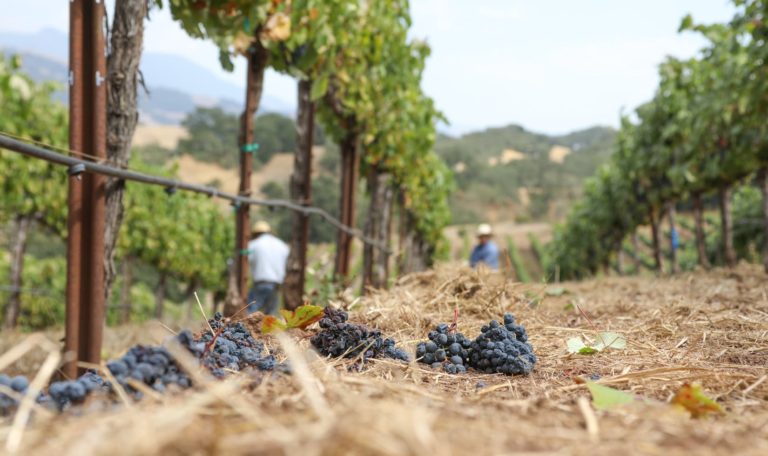Warm weather is vital during summer grapevine veraison, when the green grapes change color and increase their sugar levels. in years when temperatures in July and August are 10-20 degrees below normal in Sonoma County wine country, such as 2010, 2011 and 2017, veraison takes place slowly, which can lead to unevenly ripened and unevenly colored grape clusters. The above video shows scenes from veraison, and our assistant winemaker explains the importance of veraison thinning grape clusters below.
As a rule of thumb, harvest begins roughly six weeks after 100 percent veraison.
Does the need for veraison thinning of grape clusters have an impact on vintages like 2010 and 2011? If you read some of the wine industry discussions, you probably think 2010 weather has been a big thorn in the side of every winegrower.
Hardly.
There is a lot of confusing information out there about cool weather and its influence on harvest. It’s important to keep in mind the following: First, heat does not ripen fruit. Solar radiation is what makes photosynthesis occur in grapes. (Grapevines convert carbon dioxide into sugars using the energy from sunlight during photosynthesis.) Also, photosynthesis slows around 90 degrees and shuts down after 95, protecting the plant from loss of water. Lastly, moderate temperatures in a growing season define classical vintages like 2010. This type of weather yields grapes with color, tannin and fruit concentration that are fully mature without excessive sugar levels.

But the cool summer in 2010 led to a lack of early morning solar radiation, and the cool evening temperatures have slowed the relocation of saccharides (carbohydrates or sugars) in the plants that develop during photosynthesis. The cooling trend continued post-veraison, and our harvest dates were a little later in 2010 and 2011 than recent vintages. It is, however, quite common for Alexander Valley to be bathed in fog up to 10 a.m., and those same weather patterns existed in our region 30 years ago. Mother Nature did provide us with warm days without cold nights in September 2010, so the grapes continue their ripening under these almost ideal conditions.

Veraison Thinning Grape Clusters: An Important Winemaking Process
Veraison thinning grape clusters (discussed in the above iPhone 4 video) is a critical practice every year for us. In cool weather vintages like 2010, we began removing grape clusters at veraison on 100 percent of our estate vineyard blocks, dropping many clusters to the ground. (And our resident birds, rabbits and turkeys can’t enjoy them because they are still too acidic!) Though we had ideal spring weather conditions in 2010 — rapid bloom and very even fruit set — we still need to make sure every year that the vines are focused on the ripening the best grapes — and the right quantity of grapes. If there are too many grape clusters on a vine, the vine won’t be able to focus on ripening them fully. Cool temperatures are giving the grapes ample time to develop flavors, so 2010 could be a classic vintage.
If the fruit continues to ripen slowly and consistently, we can pick grapes at a lower Brix, or sugar levels, rather than needing to drive the sugars higher to get flavor. The bottom line is that although this growing season is one of our cooler years (mildew pressures have been high all season), the possibility for producing a great wine this year is very high. Our first harvest in 1976 didn’t start until October 13; in 1977, we started picking on October 5, and in 1978, we started the last week of September. Unlike 2010, those were all drought years. And classics, which 2010 will likely become.


